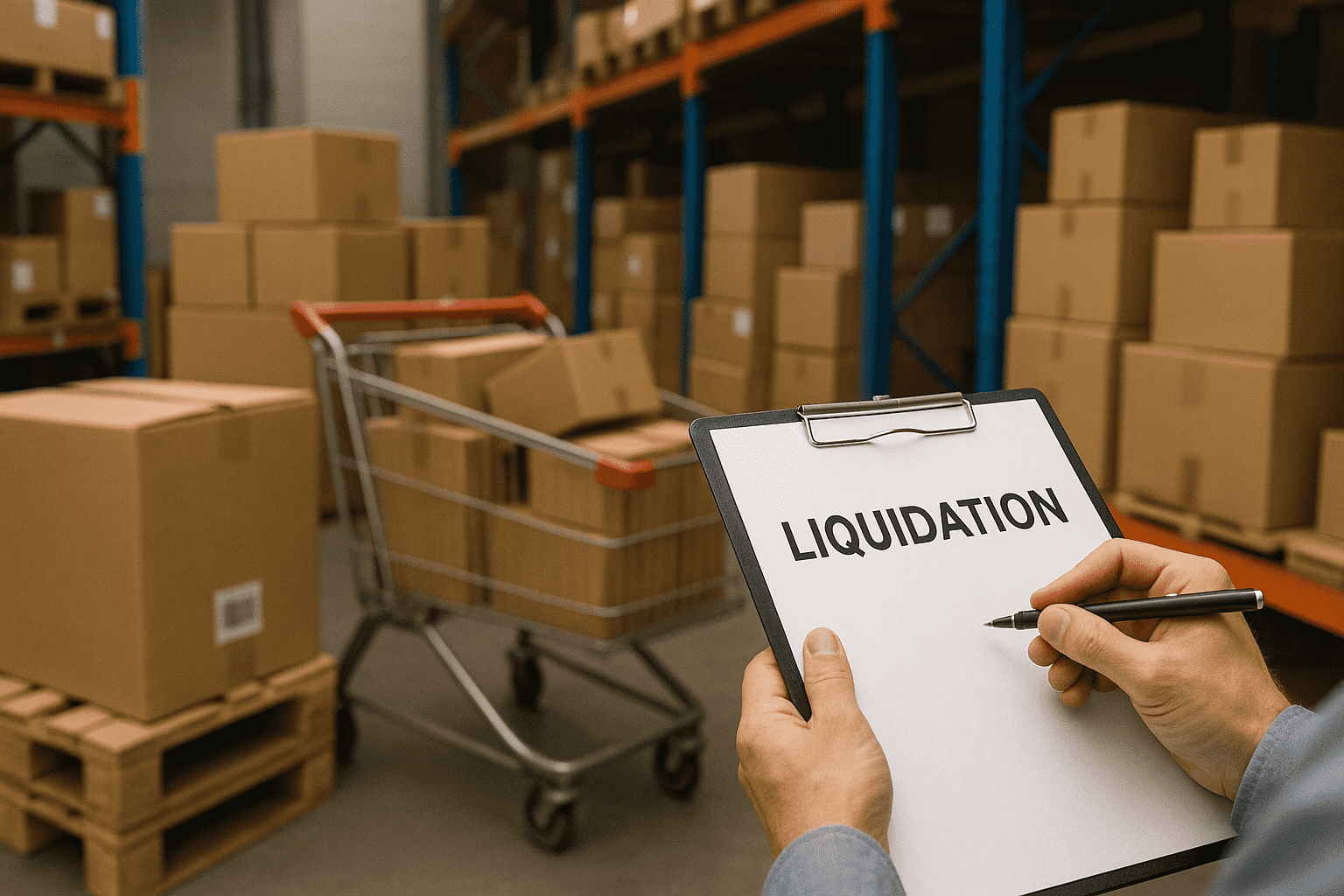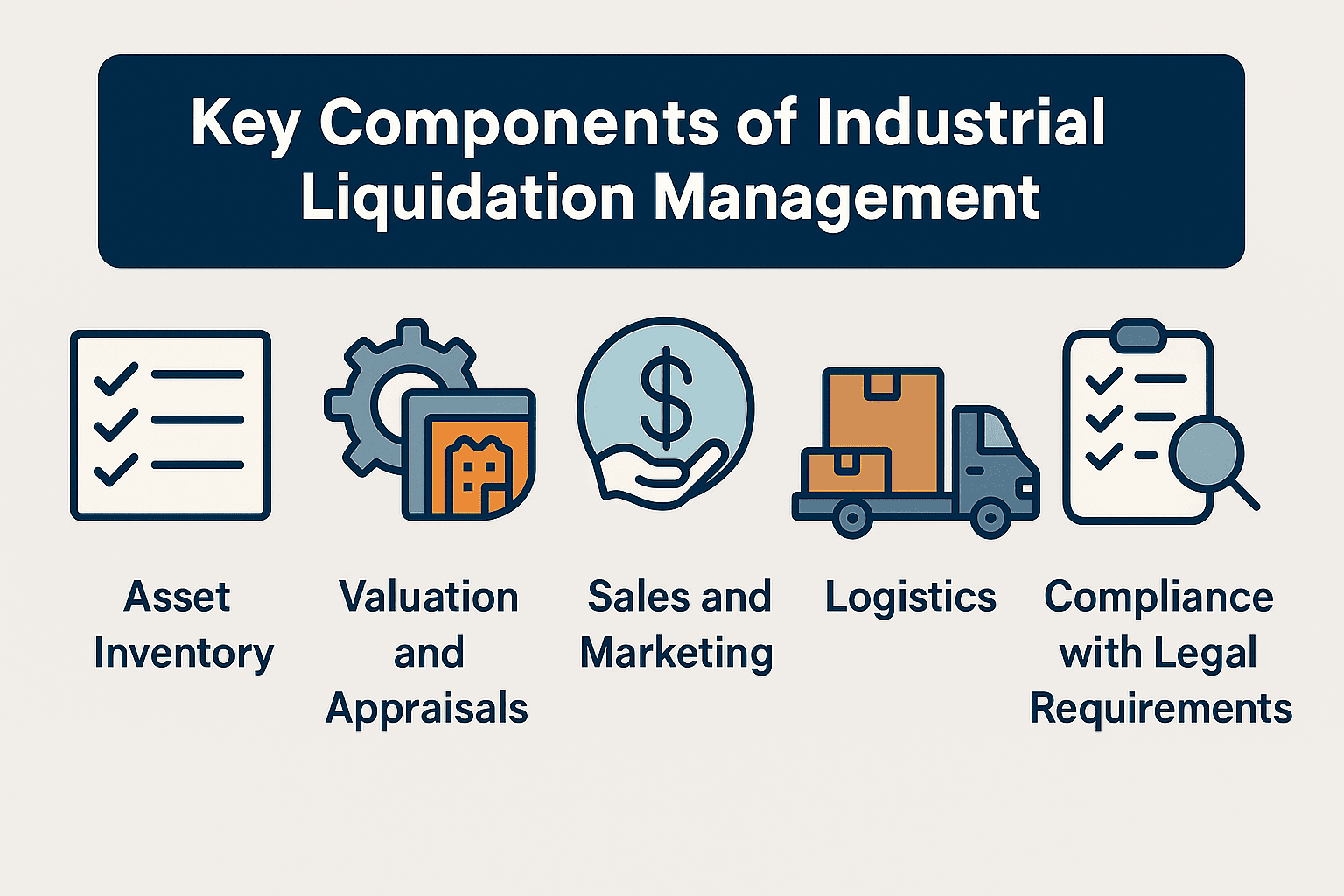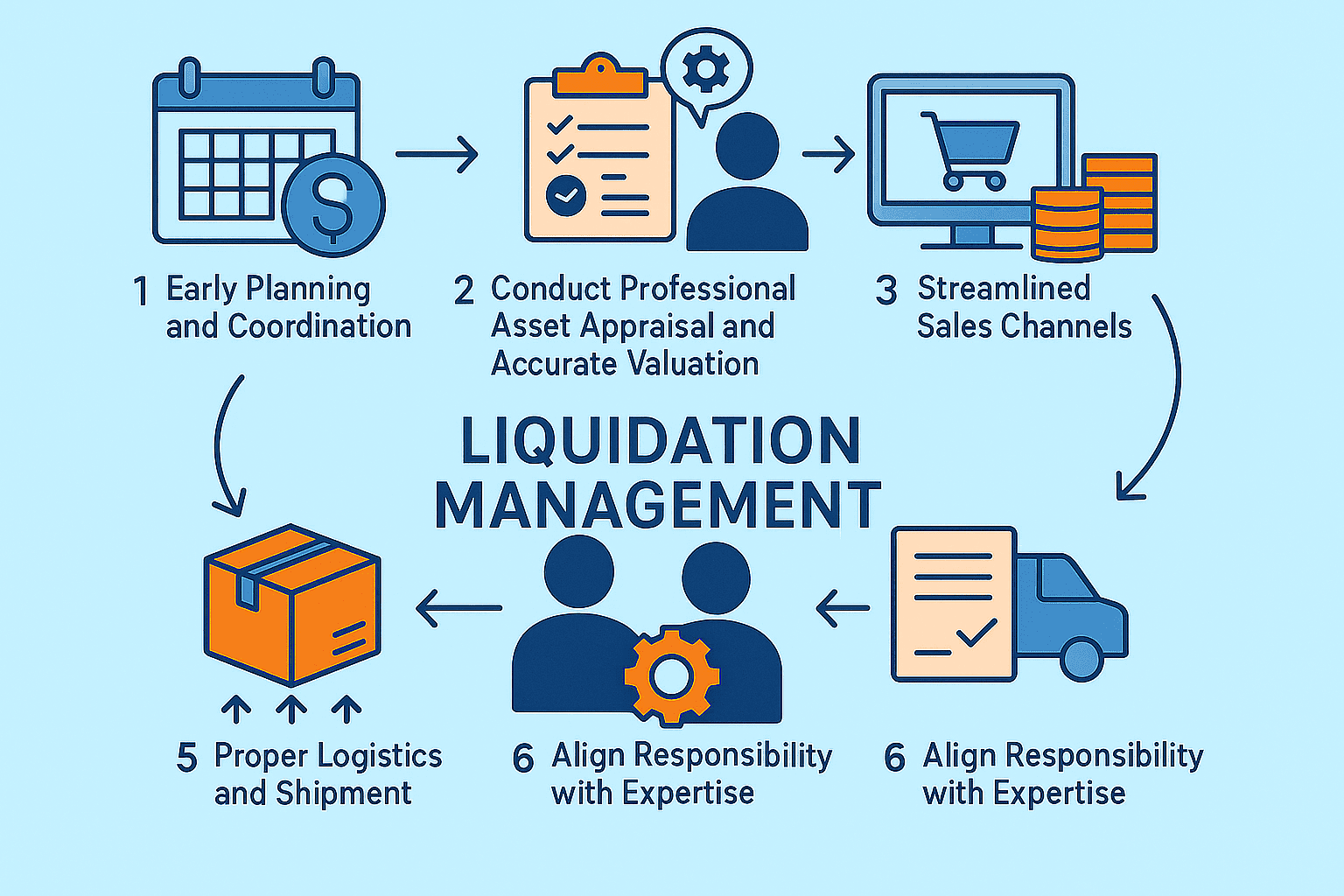Liquidation Management: What It Is & Best Practices to Fast Track Industrial Liquidation

Liquidation management is essential for businesses seeking to efficiently handle surplus assets during closures, downsizing, or restructuring operations. Without a structured liquidation strategy, idle machinery, excess inventory, and unused industrial equipment can quickly become costly liabilities, draining resources and hampering profitability.
Effective liquidation management is especially critical for manufacturers, warehouses, and large-scale industrial operations. By systematically disposing of or selling surplus assets, you minimize unnecessary carrying costs, maximize asset recovery, and maintain regulatory compliance, protecting your bottom line and operational efficiency.
In this blog, you'll gain a clear understanding of liquidation management and discover best management practices to accelerate asset recovery during industrial liquidation.
What Is Liquidation Management?

Liquidation management refers to the structured asset disposition process of identifying, valuing, and efficiently disposing of surplus, obsolete, or idle assets within a business. It involves overseeing the sale, transfer, or responsible disposal of these assets, with the primary goal of maximizing financial recovery and minimizing associated costs.
The scope of liquidation management can vary significantly, depending on whether the liquidation is voluntary or involuntary:
- Voluntary liquidation occurs when a business proactively decides to liquidate assets, often due to restructuring, downsizing, mergers, or strategic realignment. In this scenario, you have greater control and more opportunity to maximize asset value.
- Involuntary liquidation is typically triggered by external factors, such as bankruptcy, regulatory mandates, or creditor actions. Under these circumstances, liquidation management requires swift decisions to minimize losses and ensure regulatory compliance, often under strict timelines and reduced flexibility.
Key Components of Industrial Liquidation Management

Efficient liquidation management requires a structured approach that ensures every step involved is optimized to maximize returns and minimize risks. Here are the key activities involved:
1. Asset Inventory
Creating a detailed and accurate inventory is the foundational step. It involves cataloging all available assets, including machinery, tools, spare parts, and infrastructure, along with condition reports, usage histories, and maintenance records. Proper asset documentation allows you to prioritize items for liquidation and sets the stage for accurate valuation.
2. Valuation and Appraisals
Professional valuation and appraisals are critical for setting realistic prices and maximizing asset recovery. Certified appraisers determine accurate market, liquidation, or book values, helping you understand each asset’s true worth and ensuring competitive pricing in the marketplace.
3. Sales and Marketing
Effectively marketing your industrial assets is key to successful liquidation. This step involves choosing appropriate sales channels such as specialized industrial liquidators, online marketplaces, auctions, consignment services, or actively targeting qualified buyers. Clear, compelling marketing messages highlighting asset condition and value ensure faster sales and higher returns.
4. Logistics
Managing logistics is an essential step in liquidation asset management, it ensures assets reach buyers efficiently and in good condition. It includes coordinating asset dismantling, transportation, storage, and delivery. Effective logistics management helps prevent delays, reduces costs, and minimizes operational disruptions.
5. Compliance with Legal Requirements
Ensuring compliance with relevant legal and regulatory requirements is non-negotiable. This includes properly handling and disposing of hazardous materials, adhering to industry-specific standards, and maintaining accurate transaction records. In cases like chemical factory liquidation, strict environmental compliance is especially critical to avoid fines, legal liabilities, and environmental damage.
Best Management Practices to Fast-Track Industrial Liquidation

1. Early Planning and Coordination
Effective liquidation management begins with early, structured planning. Starting the liquidation process well in advance gives you time to make strategic, informed decisions and prevents costly mistakes caused by rushed actions.
Cross-department collaboration is equally crucial. Ensure finance, operations, compliance, and logistics teams align early, maintaining clear communication throughout the process.
Coordinated planning eliminates confusion, accelerates asset valuation, and streamlines compliance, making the liquidation faster, smoother, and more cost-effective.
2. Conduct Professional Asset Appraisal and Accurate Valuation
Accurate asset valuation directly impacts your financial recovery from liquidation. Relying on certified appraisers and experienced liquidation experts ensures assets are priced competitively and realistically, attracting more qualified buyers and maximizing returns.
Additionally, leverage advanced technology such as inventory management software and AI-driven valuation tools to streamline the appraisal process. These tools enable precise tracking, real-time updates with secondary market insights, and consistent valuations, making your liquidation faster, more transparent, and ultimately more profitable.
3. Streamlined Sales Channels
Selecting the appropriate sales channel is crucial to accelerate your industrial liquidation and maximize asset recovery. Depending on asset type, condition, and market demand, you can choose from auctions, negotiated direct sales, or specialized industrial asset marketplaces.
Building relationships with reputable industrial buyers and liquidators is equally critical. Established partnerships simplify negotiations, improve buyer confidence, and speed up transactions.
With the right sales channel and trusted buyer network in place, you achieve faster liquidation and higher returns on your surplus assets.
4. Legal and Regulatory Compliance
Maintaining strict compliance with legal and regulatory requirements is essential for efficient and risk-free liquidation.
Understand and adhere to regulations governing asset liquidation, especially those involving hazardous materials or equipment with significant environmental impact. Proactively managing compliance prevents costly legal penalties, operational disruptions, and damage to your business’s reputation.
Keep detailed and accurate documentation of all liquidation activities, including sales contracts, environmental certifications, regulatory approvals, and transaction records. Thorough documentation simplifies audits, ensures transparency with buyers and regulators, and supports a smooth, compliant liquidation process.
5. Proper Logistics and Shipment
Efficient logistics management is yet another key element for a successful liquidation. Without careful handling and well-organized shipping, machinery and equipment can sustain damage, significantly reducing their market value.
Ensure you have an experienced logistics team that can oversee equipment disassembly, secure packaging, and safe transportation.
If in-house logistics capabilities are limited, partner with a reputable third-party logistics provider who specializes in industrial equipment. Proper logistics planning and execution protect your assets, reduce transport-related losses, and ensure a smoother, more profitable liquidation.
6. Align Responsibility with Expertise
In many companies, asset disposition is handed off to procurement teams, although it falls outside their core competencies. While procurement manages sourcing and contracts well, they’re not always equipped to handle the complexity of liquidation. If your organization doesn’t have a dedicated team for disposition, working with professional industrial liquidators is a smart move. They bring the right networks, marketing channels, and operational expertise to recover more value faster and with less internal disruption.
These liquidators manage the entire marketing and sales process, leveraging their established networks of qualified industrial buyers. This approach accelerates the liquidation, maximizes asset recovery, and enables your internal teams to remain focused on their primary functions.
How Amplio Manages Your Industrial Liquidation

- Centralized Surplus Asset Management:
Amplio’s intuitive platform tracks, assesses, and manages your surplus industrial assets from one centralized location, simplifying your liquidation efforts. We handle it for you, so you can move on to other priorities.
- Expert Network of Buyers and Sellers:
We have built an extensive network of pre-vetted industrial buyers and sellers to whom we sell your surplus, enabling faster, more reliable liquidation transactions.
- Real-Time Data & Analytics:
Amplio provides daily secondary market insights, advanced analytics, and strategic pricing recommendations to maximize your asset recovery.
- Smooth Logistics:
Our dedicated logistics team handles equipment transfers professionally and efficiently for quick and secure asset disposition.
Get started with Amplio today for expert guidance on optimizing your industrial liquidation strategy, accelerating asset recovery, and streamlining the entire liquidation process.